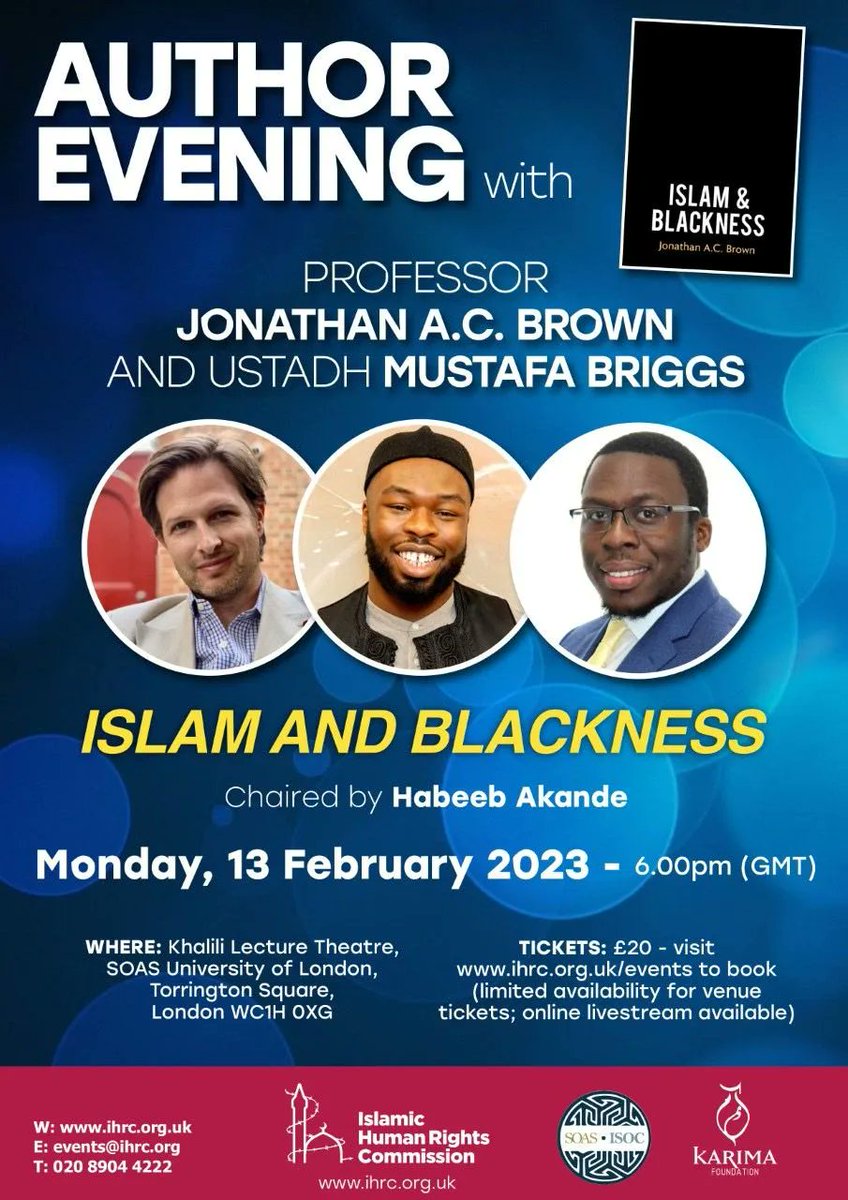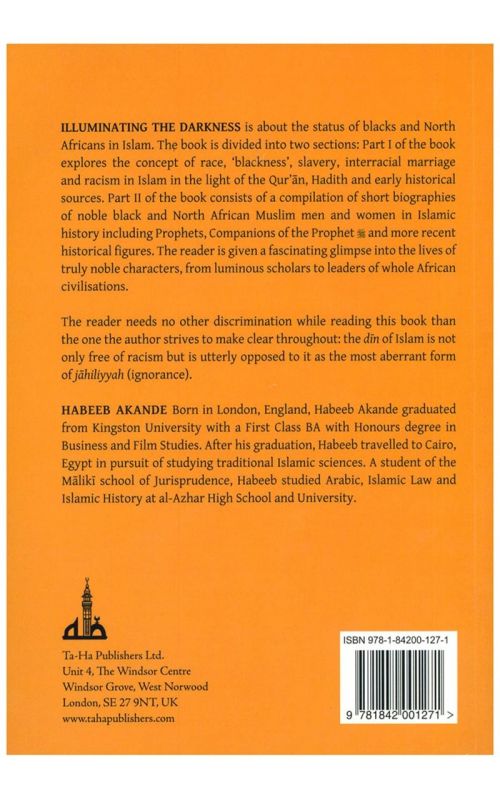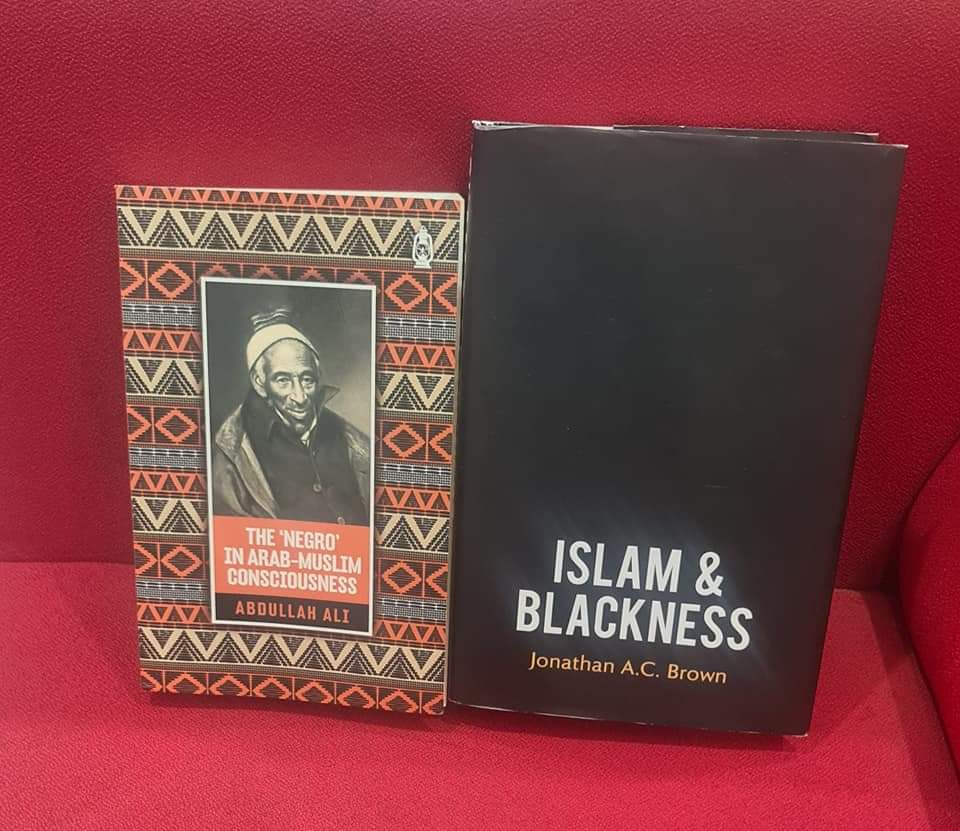
Anti-Blackness in Maliki Fiqh?
Although Islam teaches racial equality, anti-black sentiment does exist in some Arab-Muslim literature and Islamic law (fiqh) texts by traditional scholars.
Although Islam teaches racial equality, anti-black sentiment does exist in some Arab-Muslim literature and Islamic law (fiqh) texts by traditional scholars.
“Fiqh gives the right to wife to reject a husband due to prior or recent flaws…such as blindness, balding, and black skin unconditionally.” – Moroccan scholar Muhammad al-Ta’wil (d. 2015), author of 'There Is No Male-Preference in Islamic Law'
“The aesthetic judgment that jet black skin is a defect appeared to be a common notion among Malikis of North and Northeast Africa and Andalus (Islamic Spain) where we can confidently assume were populations with predominately light and pale white skin color.
Malikis of the Sahel, apparently, did not share these aesthetic cultural assumptions. The author, being Moroccan, clearly shares this assumption but is also committed to uncritically conveying a historical perspective widely held by North African Malikis
influenced by the Egyptian Azhari sector of the school. I speak about many of these issued in my book entitled The Negro in Arab Muslim Consciousness." - Dr Abdullah bin Hamid Ali
"It is not permitted for a young man to look at the faces of unrelated women, 'out of fear of temptation (fitna),' except for an old woman, a black woman or the likes." - Algerian Maliki scholar Abu Zayd al-Waghlisi (d. 1384-5) in the basic primer on Maliki law called Waghlisiyya
Sadly, a number of North African Maliki scholars associated 'blackness' with undesirability for marriage.
This assessment of desirability is based on the scholars' opinions and customs. It should not be taken as a timeless or universal declaration from Islam.
This assessment of desirability is based on the scholars' opinions and customs. It should not be taken as a timeless or universal declaration from Islam.
In medieval and early-modern Andalusian and North African societies, black (dark) skin was linked to slave status or slave descent.
For many of the lighter-skinned Muslims in Northern Africa, black people were considered less desirable marital partners.
For many of the lighter-skinned Muslims in Northern Africa, black people were considered less desirable marital partners.
"Blackness was merely one of many features that the authors of the Maliki legal texts in question, mostly Arab or Berbers in Andalusian and North Africa, considered aesthetically of socially unappealing.
Particularly in Morocco, having dark (sumra) or black skin or being a freed slave (hartani) made potential grooms undesirable or unsuitable for a noble or light-skinned (bayda)." - Professor Jonathan A.C. Brown, author of Islam and Blackness
Many Maliki scholars criticised al-Waghlisi's statement about black women. "As Zarruq had intimated, there are beautiful black women just as there are beautiful women every race. " - Brown adds
In regard to al-Waghlisi's words about black women being unattractive, Moroccan scholar al-Kattani (d. 1909) said "it should never have been said!"
Sadly, the notion that blackness is undesirable is still prevalent in many Arab, North African and Asian Muslim communities.
It is important that this is called out, and blackness is celebrated, rather than wait for non-black people to validate the beauty of black women.
It is important that this is called out, and blackness is celebrated, rather than wait for non-black people to validate the beauty of black women.
In defense of black Africans, al-Jahiz (d. 868), an Afro-Arab scholar, wrote a passionate treatise celebrating the virtues of black people and addressed Muslim anti-blackness in ninth century Iraq.
On the topic of attraction, al-Jahiz wrote, "desires [about skin colour and facial features] are customs, and most of them are just inherited traditions."
Hanafi scholar Mulla Ali al-Qari (d. 1606) also said attractiveness is based on custom and culture.
Hanafi scholar Mulla Ali al-Qari (d. 1606) also said attractiveness is based on custom and culture.
The Shafi' scholar Ibn Abd al-Baqi (d. 1585) wrote a book, The Embroidered Robe on the Virtues of Ethiopians, which is best described as a love letter to women from the Horn of Africa (i.e. Ethiopia, Eritrea, Somalia, Kenya, Sudan, Uganda, South Sudan and Djibouti).
Ironically, finding darker skin tones or Black African features attractive was not uncommon among Arabs of the Prophet's time. The Prophet's cousin, Ja'far ibn Abu Talib preferred dark-skinned and dark-lipped women, according to a report.
Persian scholar Ibn Marzuban (d. 919) dedicated a chapter on early Muslims who fell in love with Black African women or found them very attractive.
Iraqi Hanbali scholar Ibn al-Jawzi (d. 1201) referred to this in his book about the virtues of black Africans in Islam.
Iraqi Hanbali scholar Ibn al-Jawzi (d. 1201) referred to this in his book about the virtues of black Africans in Islam.
Egyptian scholar Jalal al-Din al-Suyuti (d. 1505) wrote three books on noble qualities of black Africans including the beauties of black African women
Suyuti had a child with an Ethiopian woman, called Ghusun, whom he was deeply in love with. The prominent scholar mourned the death of his beloved.
Someone may ask, “why did Muslim scholars write books celebrating black people when the Prophet preached racial equality?” The answer can be found in the introduction of Ibn al-Jawzi's book, Illuminating the Darkness (Tanwir al-Ghabash fi fadl al-sudan wa-al-habash)
"I witnessed a group of noble Abyssinians (Ethiopians) who were heartbroken over the darkness of their skin colour. I advised them that importance is only placed upon inner excellence rather than beauty of outer form.
I wrote this book for them to mention the great virtue of many from amongst the Ethiopian and Black (Sudanese) people."
From al-Jahiz in 9th century Iraq to Ahmad al-Hifni ibn Muhammad Kiram al-Qana’I al-Azhari in the 20th century, Muslim scholars authored numerous works on black excellence.
Primarily written by non-black male authors, ‘the virtue of blacks’ was a popular literary genre in the medieval Arab-Muslim world.
To learn more about this literary genre and the contributions of black people in Islam....
Author Evening - Islam and Blackness on Monday 13 February 2023 at 6pm UK time at SOAS w/ Jonathan Brown & Mustafa Briggs
Tickets available from link below
eventbrite.co.uk/e/islam-blackn…
Author Evening - Islam and Blackness on Monday 13 February 2023 at 6pm UK time at SOAS w/ Jonathan Brown & Mustafa Briggs
Tickets available from link below
eventbrite.co.uk/e/islam-blackn…

Whilst studying Islamic law at al-Azhar University in Egypt, I came across numerous anti-black statements by classical and contemporary scholars of Islam. However, I was pleased to find religious scholars who spoke out against Muslim anti-blackness.
In response to the negative representations of black people which developed in some Muslim societies, two approaches emerged from scholars against anti-black racism in Islam; the resistance model and the internalising contempt model.
The resistance model is where scholars unapologetically spoke in defence of black people and their achievements/beauty. The internalising contempt model is where scholars accepted the proposed negativity/ugliness of blackness but asserted their moral and intellectual qualities.
Examples of the internalising contempt model are statements;
• "She is pretty for a dark-skin girl"
• "He is smart for a black person"
These are backhanded compliments.
• "She is pretty for a dark-skin girl"
• "He is smart for a black person"
These are backhanded compliments.
Examples of the resistance model are statements;
• "Black is beautiful"
• "African scholars have long existed in Islam"
• "Arab/Asian/European culture is not superior to African culture(s)"
• "Black is beautiful"
• "African scholars have long existed in Islam"
• "Arab/Asian/European culture is not superior to African culture(s)"
My 'Illuminating' books are based on the resistance model like the works of al-Jahiz and al-Suyuti. They are unapologetically black, Muslim, and they celebrate the beauties & achievements of black/African Muslim men & women in history.
No inferiority complex here
Alhamdulillah
No inferiority complex here
Alhamdulillah

Illuminating the Difference: Black, White, and Brown Women by Habeeb Akande (2015) explores female beauty and male desire. The book was inspired by al-Suyuti's 15 century text on the beauties of black African women which he wrote in response to the colourism of the Muslim world. 

Illuminating the Darkness: Blacks and North Africans in Islam (2012) by Habeeb Akande explores race, blackness, colourism and black excellence in Islam and early Muslim history. Drawing upon classic texts, the author argues that the religion of Islam is free of anti-black racism 

The reader needs no other discrimination while reading this book than the one the author strives to make clear throughout: the din (religion) of Islam is not only free of racism but is utterly opposed to it as the most aberrant form of jahiliyyah (ignorance). 

Illuminating the Blackness (2016) presents the history of Brazil's race relations and African Muslim heritage. The author also shares his insights into the complexities of race in Brazil and draws comparisons with the racial histories of the pre-modern Muslim world. 

The author explores the black consciousness movement in Brazil and examines the reasons behind the growing conversion to Islam amongst Brazilians, particularly those of African descent.
As a Yoruba Muslim man who studies history, this was an enjoyable book to research and write
As a Yoruba Muslim man who studies history, this was an enjoyable book to research and write

An example of anti-blackness in an Islamic law book from a Maliki fiqh scholar in North Africa
"It is not permissible for a young man to look at an unrelated woman's face due to the fear [of sexual temptation], except if the woman is old or black or the like..."
"It is not permissible for a young man to look at an unrelated woman's face due to the fear [of sexual temptation], except if the woman is old or black or the like..."

"It's haram (impermissible) to look at an unrelated woman's face, except if she is an old woman or a black woman, then it's permissible [because they are not a source of sexual temptation due to their unattractiveness]" - Maliki fiqh book in North Africa
This is ridiculous!
This is ridiculous!

Recommended reads on Muslim anti-black racism and Muslim colourism in the Maliki fiqh legal tradition. The books combat accusations of racism in Islam, as well as addressing anti-black sentiment found in premodern scholars' scholars works. 

The "Negro" in Arab-Muslim Consciousness by Abdullah bin Hamid Ali
The author examines premodern Arab-Muslim perceptions of 'black' identity and female desirability in Islamic law amongst the medieval Muslim scholars in Arabia, North Africa & Spain.
The author examines premodern Arab-Muslim perceptions of 'black' identity and female desirability in Islamic law amongst the medieval Muslim scholars in Arabia, North Africa & Spain.

Islam and Blackness by Jonathan A.C. Brown
The author builds on and expands many recent works that examine the complicated relationship between Islam and blackness. He addresses antiblackness in Muslim texts and challenges 'black being undesirable' in Maliki marriage law.
The author builds on and expands many recent works that examine the complicated relationship between Islam and blackness. He addresses antiblackness in Muslim texts and challenges 'black being undesirable' in Maliki marriage law.

Islam as a religion is NOT anti-black, but some Muslims (including scholars) were/are anti-black.
It may be an uncomfortable truth, but it's a reality.
Only a naive or dishonest mind could be surprised at the gaps that exist in society between its ideals and its practices.
It may be an uncomfortable truth, but it's a reality.
Only a naive or dishonest mind could be surprised at the gaps that exist in society between its ideals and its practices.
Historical reasons for anti-black sentiment in the Arab-Muslim world;
• the 'Curse of Ham' mythical story where it was reported that Prophet Noah cursed his son and African descendants with 'blackness' and servitude,
• the 'Curse of Ham' mythical story where it was reported that Prophet Noah cursed his son and African descendants with 'blackness' and servitude,
• fabricated hadiths attributed to the Prophet (saw) that black people steal when hungry and fornicate when not hungry,
• the 14 year revolt of east African black slaves in 9th century Iraq, known as the 'Zanj rebellion' during the Abbasid caliphate
• the 14 year revolt of east African black slaves in 9th century Iraq, known as the 'Zanj rebellion' during the Abbasid caliphate
• South Asian caste system where dark-skinned people were considered inferior
• the rise of xenophobia and colourism amongst Arabs,
• the rise of xenophobia and colourism amongst Arabs,
• Muslim legal texts (fiqh) stating black women are less desirable than non-black women for marriage, and fatwas that black women do not need a wali (guardian) to marry or to wear a face veil (niqab) as they're not a source of attraction so men do not need to lower their gaze
• anti-black statements by some scholars that black people were inferior, less intelligent and had unbridled lust
• the fear of black sexuality and the black eunuchs in the Ottoman Empire, where African men were castrated to serve as impotent guards for the Caliph's women
• the fear of black sexuality and the black eunuchs in the Ottoman Empire, where African men were castrated to serve as impotent guards for the Caliph's women
• the influence of the Ancient-Greeks' natural slave theory on Persian and Arab Muslim scholars who believed black Africans were hypersexual, stupid and suited to be slaves.
These all attributed to the perception amongst non-black scholars that black Africans were inferior
These all attributed to the perception amongst non-black scholars that black Africans were inferior
To find out more, check out the upcoming Author Evening event on Monday 13 February 2023 at SOAS University of London with Muslim scholars, academics and researchers discussing #IslamAndBlackness
Tickets available from link below
eventbrite.co.uk/e/islam-blackn…
Tickets available from link below
eventbrite.co.uk/e/islam-blackn…

Beyond Bilal: Black History in Islam by Mustafa Briggs
A well-written primer on the contributions of Black Muslims in history, including female scholarship in the African Islamic tradition. The author demonstrates that blackness played a significant role in world civilisation.
A well-written primer on the contributions of Black Muslims in history, including female scholarship in the African Islamic tradition. The author demonstrates that blackness played a significant role in world civilisation.

"Some people use religion to justify their racism and xenophobia"
Black Muslims Respond To Anti-Black Racism In Islamic Law (Fiqh) and Arab-Muslim Cultures
Allah and His Prophet (saw) are free from anti-black racism.
Black Muslims Respond To Anti-Black Racism In Islamic Law (Fiqh) and Arab-Muslim Cultures
Allah and His Prophet (saw) are free from anti-black racism.
There is no denying that anti-black sentiment is rampant among many Muslims, as seen in Senegalese scholar Ahmad Bamba’s (d. 1927) book, in which Arabs and Berbers of his time used to look down upon Black Africans.
"Do not turn down [this book's] benefit because I am from among the blacks. The most honoured servant with God is, without a doubt, the most pious. And blackness of body signals neither weakness of mind nor lack of understanding" - Sh. Ahmad Bamba (d. 1927), Pathways to Paradise
• • •
Missing some Tweet in this thread? You can try to
force a refresh











